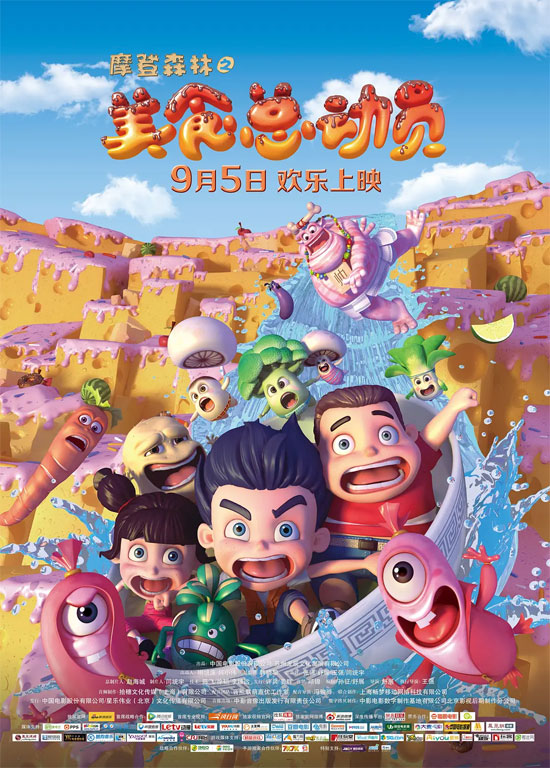Film Name: 摩登森林之美食总动员 / Food War

Where is the food? This is the biggest question I had after watching 90 minutes of scallions, ginger, garlic, meat chunks, cauliflower, ham, mushrooms, and even a lively vegetable basket. Rather than calling this a culinary extravaganza, it’s more aptly described as an ingredient extravaganza. Yet just as the film fails to transform its ingredients into a true culinary masterpiece, its own disparate elements struggle to coalesce into a satisfying feast.
Whether it’s Pixar’s “Ratatouille” or Sony’s “Cloudy with a Chance of Meatballs,” the reason they ultimately focus on the finished dish rather than the ingredients lies in the fact that humans connect with the process of transforming ingredients into food, not with the ingredients themselves. We’ve also seen animated films featuring cartoonish vegetables and fruits as protagonists, but such films rarely include human characters, often presenting a closed-off world of produce. Yet “Food Wars!” jumbles humans and ingredients together in a way that’s utterly incongruous.
The character designs are nauseatingly ugly. Setting aside the protagonists who look indistinguishable from ordinary children, even the featured ingredients lack any aesthetic appeal. Vegetable characters are essentially their real-life counterparts with eyes added—and those models are just a few simple shapes roughly sketched out, saving countless production costs. The meat-based characters are even more unbearable. Beyond a faint flesh tone, they resemble nothing but giant, muscle-bound monsters. Whether you liken them to the giant from Jack and the Beanstalk or the mountain giants, they bear zero resemblance to actual meat.
How can diminutive mushrooms possibly toss these massive meat monsters around like ragdolls? What kind of surreal premise is this? If that’s the case, how did Meat originally defeat and seal away the Vegetables? The film’s crucial climactic battle—the war between Vegetables and Meat—unfolds under this absurd premise. Watching it, you feel no tension, no humor, no sense of the bizarre. All that remains is contempt for the film’s irresponsible storytelling.
I recall an old ad slogan: “What to drink this year? 828 Vegetable Juice.” I have no idea what became of that brand, but I know exactly what to watch this year: the opening chase farce. From “The Magical Brush” to “Dragon Nest,” from “Yugo & Lala 2” to “Food Wars,” inexplicably, nearly every opening features a five-minute sequence of the protagonist frantically running. Could it all be inspired by “Kung Fu Panda 2”? Is this truly the only way to draw viewers into the story?
The entire film boils down to one word: chaos! Beyond the voice actors’ constant startled gasps and shrieks, the plot itself is pure mayhem—chaotic fights and nonsensical antics. Take the scene before the time travel: kids compete in a cooking contest, but it suddenly devolves into them hurling ingredients at each other, leaving a complete mess. I expected this scene to be subverted by the film’s own message—that ingredients have life and deserve respect. Instead, the movie treats this chaotic food-grabbing as nothing more than a silly game. Such empty storytelling wastes the audience’s time, money, intelligence, and moral values.
Please specify:Anime Phone Cases » Food War 2014 Animation Film Review: Ingredients alone do not make a gourmet meal.